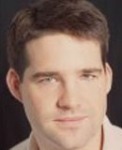Anatomy of an Eclipse RCP Application
Abstract
Thu 11:10 - 11:55 Uhr | 2007
Eclipse Rich Client Platform (RCP) is a runtime platform for delivering your
Java applications on multiple platforms. RCP is far more than just a widget
toolkit; it is effectively rich client “middleware” that provides a
comprehensive platform for building and deploying applications that are
modular, extensible, and updatable. Many organizations (including BEA, IBM,
NASA, and Novell) are using the richness of the open source Eclipse platform
to deliver high quality applications that provide rich user experiences.
In this presentation, we walk through some of the key points in the code for
an Eclipse RCP application. Discussion includes factoring of application
code into components (OSGi bundles), the use of extension points to provide
hooks that allow others to extend and customize the application, the
inclusion of custom widgets, and leveraging components as both an
independent RCP application and as plug-ins to an existing Eclipse
environment.
The presentation starts with a brief overview of the Eclipse Rich Client
Platform, along with a brief discussion many important features (component
model, jobs API, workbench, views and editors, and extension points).
The main focus of the presentation is the RCP application itself which is
presented using live code. Key parts of the application are reviewed,
discussed, and shown in action. This is effectively a shallow code review
that starts with an overview of the application that includes discussion of
the various components that make up the application, the roles that they
play, and how they interact. The underlying object model is discussed
briefly, followed by a more detailed review of the various interacting views
and how they are composed within the workbench. Extension points are then
reviewed showing attendees how an application can be made into a
domain-specific platform allowing adopters to customize and extend the
application with relative ease. This portion of the talk concludes with
dicussion of the branding process (splash screen, icons, about dialog,
etc.).
The demonstration portion of this presentation leverages Eclipse Mylar to
provide a focused view of each part under review.
The presentation wraps up with pointers to how attendees can access the
application code, and find additional help and resources.

Wayne Beaton
Wayne Beaton is employed by The Eclipse Foundation where he works as an evangelist, spreading the word and helping folks adopt Eclipse technologies. Wayne has extensive experience in object-oriented software development and is a strong proponent of refactoring, unit testing, and agile development methodologies.